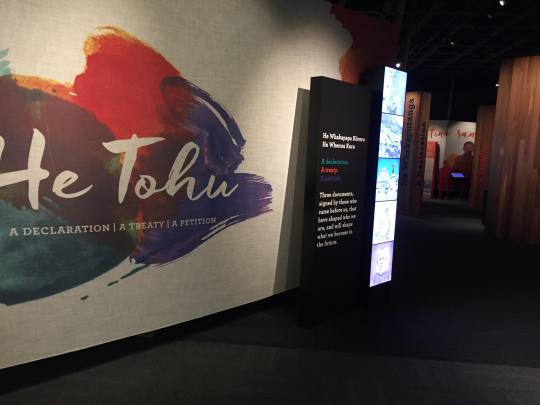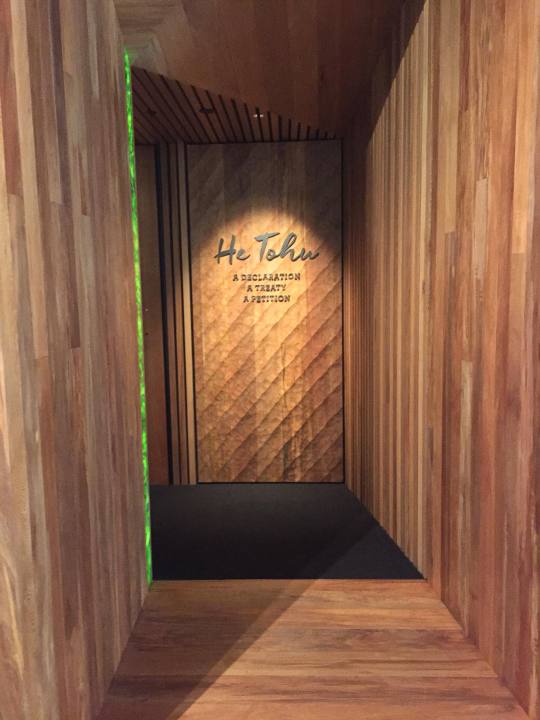#I know its a thing in lynette's stories that people doubted the validity of them being related
Text
Hear me out.
#➤ ooc: i've forgotten who i am#my friend is enabling me in dms#what if i gave in and made lyney a real catboy#LISTEN I WAS ROBBED#it wouldve been SO good#I know its a thing in lynette's stories that people doubted the validity of them being related#bc of her atavism & I dont wanna take that away#but what if he had ears that came in later#and once that happened people stopped doubting#tho they'd still be hidden by his hat most times#I wanna do it but I am Unsure#its nothing but pure self-indulgence LMAO
3 notes
·
View notes
Text
#4 Tino rangatiratanga: fed
In this blog I am trying to only refer to other materials that are open source, that anyone with an internet connection can open up. One of the things that I think is really sad about academia and the university system is how gated it is – most of the research and knowledge sits within published journals that you need a subscription to access. This is a privilege I currently have as a university student paying fees, but I know that soon I won’t have access to that realm of knowledge anymore when I finish study. So I’ve tried to avoid external links to these gated articles, but there is one quote that is too compelling to not share. It’s from an article called “Māori women leading local sustainable food systems” by Karyn Stein, Miranda Mirosa and Lynette Carter and was published in 2018. If you want to read it and don’t have access via a tertiary institution, you can buy access via the journal portal here. They interview Māori women from around Aotearoa about their involvement with community food initiatives and discuss this with reference to food security, wellbeing and quality of life for those women and the communities they are involved in. I loved this article, but there were a few quotes in particular that stood out to me. These were from Charissa Waerea at Parihaka Community gardens
“Knowledge for me is tino rangatiratanga, it’s having that matauranga [knowledge] that comes [from], and often for me, is passed down through generations and practice – if grandmother practiced it or if your mother practices it… you learn by practice and you learn by word of mouth and that is tino rangatiratanga to me. It’s that transmission of knowledge to make sure that the future generations will know that this is a plant we’ve always used and this is how we use it…. So for me, it’s more about the total ecological system, not just gardening. But it’s also our connection to the earth by putting your hands in the soil you’re reconnecting with our creators. Most activities would do these days, there’s often synthetic material or business that prevents the contact we need to actually be having on a regular basis. So there’s a lot of healing in that connection.” (p.151)

Photo 1: Charissa Waere, Emily Bailey and Urs Signer at Parihaka Community Gardens, photographed by Cameron Burnell
I can look back and see how I was formed through the practice of being in the garden with my family (which I spoke about in post #3). By being with the land I learnt about caring for it and being cared for by it. The knowledge I gained from these experiences has shaped who I am, and not just what I know. It is an embodied knowing that sits deep in who I am. Without those experience I would be different. Therefore in some way I can relate to the experience that Charissa speaks of about putting your hands in the soil and reconnecting to creators, and about how knowledge is transmitted through being together and doing together. If you’re interested you can read more about the Parihaka gardens here. These words from Charissa and reading about the gardens at Parihaka have shaped my thinking. Before reading about these initiatives I had heard about tino rangatiratanga and had heard it defined as ‘absolute sovereignty’, but this hadn’t really helped me to understand what this meant. But hearing this explained through the vision and perspective of Charissa and the Parihaka gardens I started to have some way of imagining what this looked like on the ground (literally, excuse the pun). Tino rangatiratanga isn’t just a concept that sits upon the parchment of the Treaty of Waitangi, but it is this embodied way of living that Māori are seeking to live.

Image 2: Te Mahi Māra Hua Parakore - A Māori Food Sovereignty Handbook, by Jessica Hutchings
In her book Te Mahi Māra Hua Parakore - A Māori Food Sovereignty Handbook, Jessica Hutchings talks about how growing kai in your māra (garden) restores connection with nature and whakapapa, but also is a form of self-sufficiency and resilience which stands against the corporatisation of food. Jessica emphasises the damages of monocultural food production (growing one thing at a large scale, rather than a variety at a small scale such as in a garden) upon the environment, and on the health of the people. This is something I resonate with, as my Mum drilled into me the mantra ‘fresh is best’ and would often point out how much nutritional value is lost when you eat food that has been harvested days or weeks before. Jessica also emphasises how the turn towards monoculture has rendered the environment as a tool merely for economic gain, not as something which people are interconnected with. Jessica’s call is to join her in resisting these processes of food production, stating that “Food sovereignty and food security is our right as tangata whenua (people of the land): returning to the land to grow and nourish our whānau through the kai we eat is a form of everyday activism and a practical expression of tino rangatiratanga” (p.16)
I am extremely Pākehā (see photo of pale baby me in blog post #2) but I deeply respect and value that worldview that Charissa and Jessica articulate. Around the example of food I can recognise overlap where it is similar to my own values and areas where it is different and still really unclear to me. Food, gardening and wellbeing is a space in life where I feel like I have a doorway in to understanding the expression of what it is to be Māori. Writing about this here I am hopeful that other Pākehā could resonate with this, and thereby my experience of learning could become another way for others to come into more understanding of the Māori worldview. Creating bridges of understanding seem to be so important when there seems to be so much misinformation, misunderstanding and general resistance to accepting the validity of the Māori worldview in large portions of society (if you are in any doubt about this just read stuff comments on any article discussing tino rangatiratanga or Māori rights). Looking back over my life, I can see the privilege I had in being food secure. To live in places where there was enough land and time to grow our own food, enough money around to buy what we couldn’t grown, and a family that had the time and energy and knowledge to teach me about gardening. When I was taught about gardening by my Mother I don’t think she ever would have predicted that it would become a way for me to understanding more about tino rangatiratanga. But it is through this part of my story that I was able to resonate with and think about the story and experience of others, and have any entry point into more understanding.



Image 3, 4 and 5: Photos I took of supermarket food, stacked and plastic wrapped. This kai sits disembodied from the people and ecosystems which cultivated it
Here again, I think the telling of stories helps to reshape the way we think and understand ourselves. In terms of increasing my knowledge of the stories of what actually happened in this land, one thing I did was visit the National Library and actually go and see the Treaty of Waitangi in the He Tohu exhibition. There’s a really great little exhibition which leads you through the story of what was happening in Aoteroa in the early 1800s prior to the signing of the Treaty in 1840 and what has happened since. In the exhibition you hear from historians, activists, politicians, economists, school kids, lawyers, journalists Māori and Pākehā alike. The exhibition begins with He Wakaputanga o te Rangatiratanga o Nu Tireni (The Declaration of Independence) signed by a number of chiefs in 1835. I didn’t even know about this document until going to this exhibition! The exhibition then explores the differences in the translation of the Treaty, centering on kawangatanga and rangatiratanga, before examining the way the Crown flagrantly breached the Treaty throughout the years that followed.
Having done some reading and thinking about tino rangatiratanga and the Treaty, I feel like I’m right at the start of a whole of learning about the history of this place and its people. Two of the most striking things that I took away from the exhibition was the words from Moana Jackson about the treaty not being about rights, but responsibilities to one another, and an alliance which allowed for a gift exchange between Māori and Pākehā to act towards each other in good faith. What is clear from the exhibition, and even the briefest glimpse into the history of Aotearoa is that the party who has let down this alliance and not met their responsibilities is Pākehā.

Image 6: The National Library is a slightly scary looking building but the He Tohu exhibition is worth it


Images 7 and 8: This is what the exhibition entrances look like, just in case you miss them
So the thing about all this is that the National Library is about 200m away from Parliament. As I walked around the exhibition for a few hours I saw perhaps four other people and wondered, what would happen if every civil servant and every politician was made to walk through this exhibition before they started to work for the government? What if every person in New Zealand had to take 2 hours and come and hear about this? How different would this country be?! Through the use of many voices and examples throughout the exhibition, told through video recording, you can hear stories about Aotearoa through the voices and faces of different people. This kind of story telling and sharing seems really important to me, because it humanises our histories, and for me anyway has create a bridge between my existing knowledge and life, and helped connect that with the formative events of our nation’s past. So what does all this navel gazing mean? I guess hopefully understanding some of this better helps me to be an ally to Māori as they advocate for and push for tino rangatiratanga, simply by being one less person who is ignorant of the systematic struggles they have experienced or the importance of what they are struggling for.
0 notes